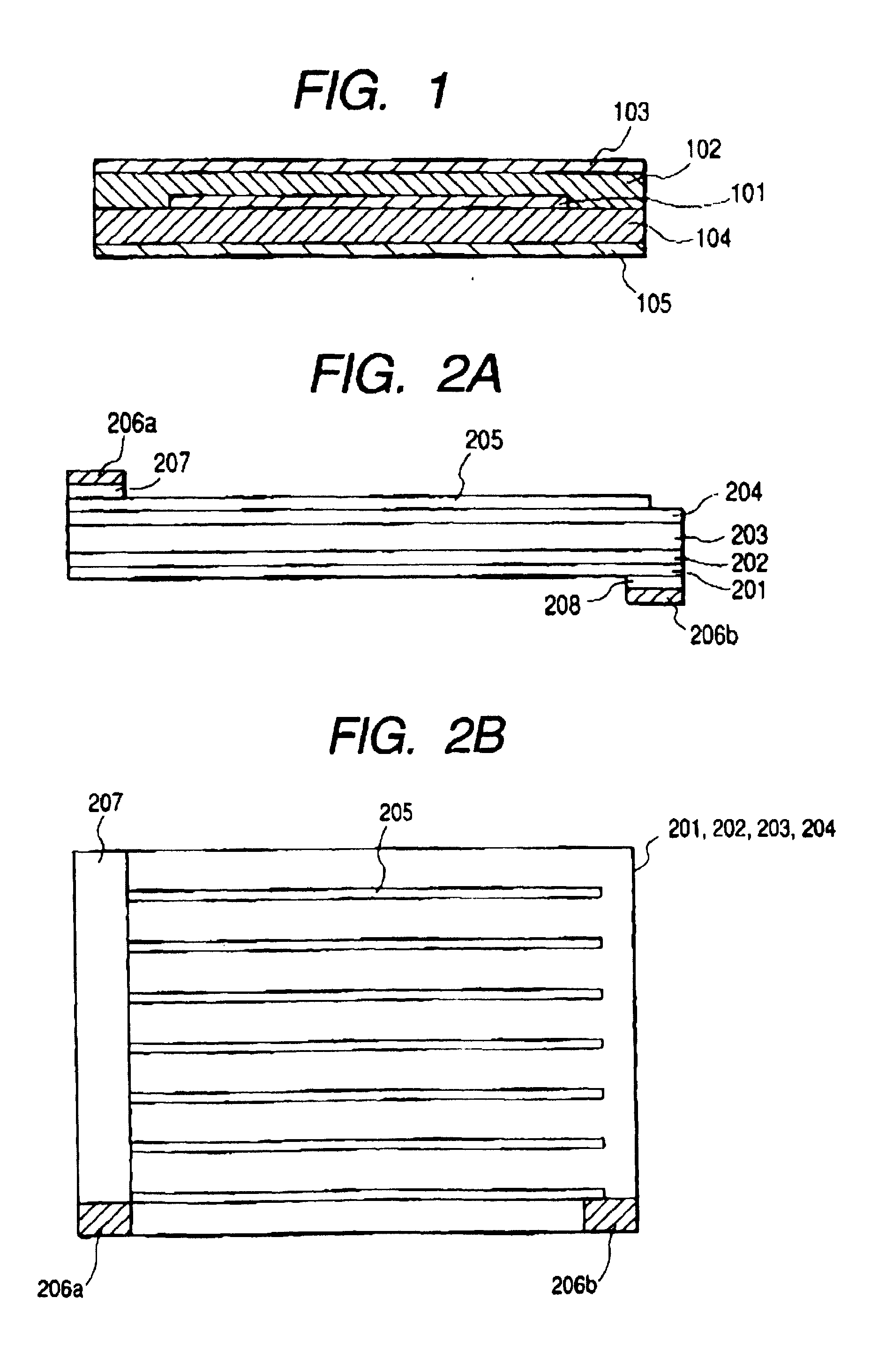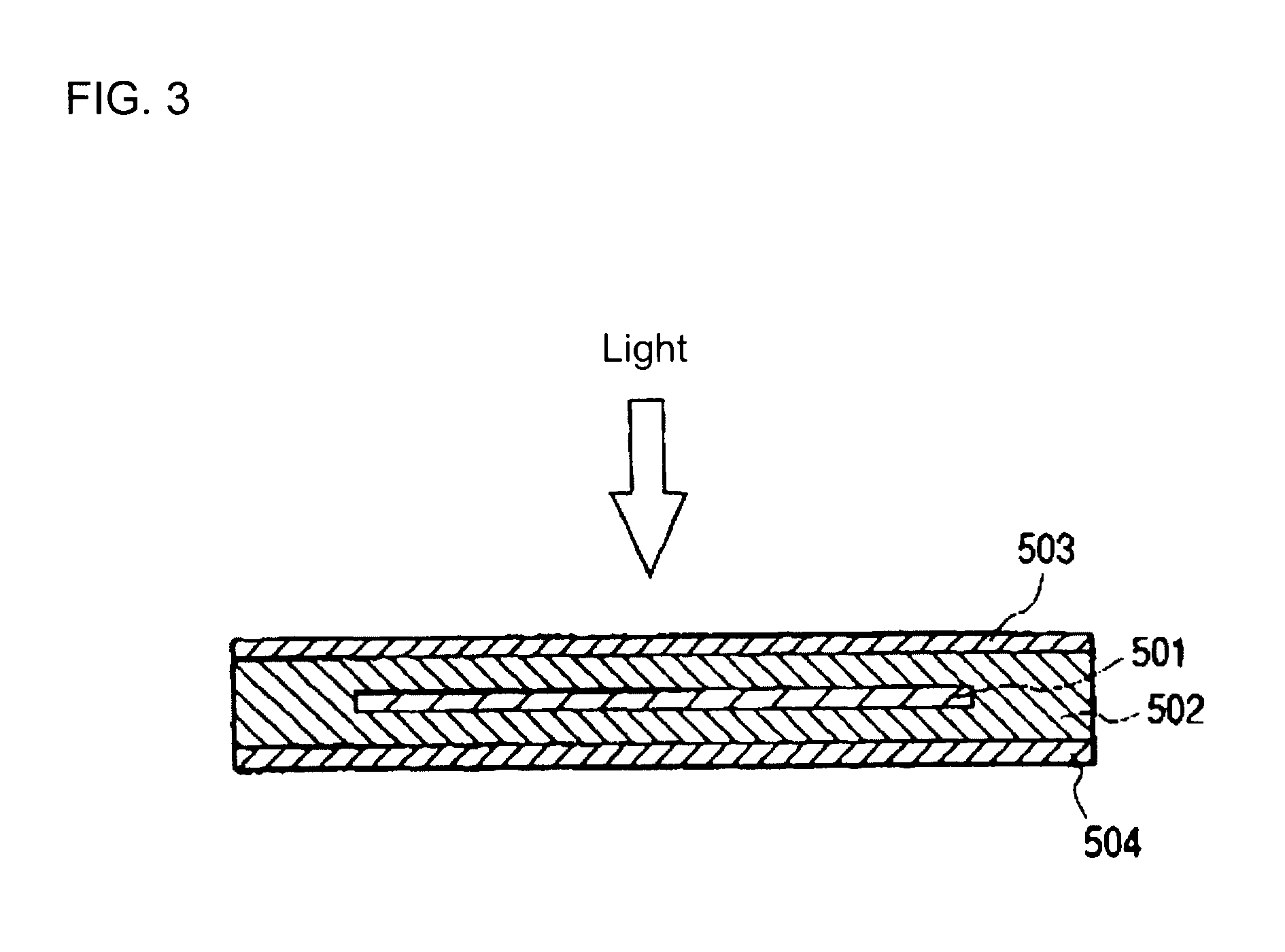Moulding compounds for the production of solar cell modules
a technology of solar cell modules and moulding compounds, which is applied in the direction of photovoltaic energy generation, electrical equipment, and semiconductor devices, etc., can solve the problems of corrosion of the photovoltaic element itself or of metallic parts, the photovoltaic element cannot withstand extreme outdoor conditions, and the fixing means and/or peeling of the photovoltaic element yellowing and/or peeling, etc., to achieve effective absorption, increase the weathering resistance of the solar cell module, and efficient utilization rate ra
- Summary
- Abstract
- Description
- Claims
- Application Information
AI Technical Summary
Benefits of technology
Problems solved by technology
Method used
Image
Examples
Embodiment Construction
[0062]The moulding composition according to the invention comprises at least one polyalkyl (meth)acrylate, which can be used alone or else in a mixture of a plurality of different polyalkyl (meth)acrylates. The polyalkyl (meth)acrylate can moreover also take the form of a copolymer.
[0063]For the purposes of the present invention, particular preference is given to homo- and copolymers of C1-C18-alkyl (meth)acrylates, advantageously of C1-C10-alkyl (meth)acrylates, in particular of C1-C4-alkyl (meth)acrylates, and these can, if appropriate, also comprise monomer units which differ therefrom.
[0064]The term (meth)acrylate here means not only methacrylate, e.g. methyl methacrylate, ethyl methacrylate, etc., but also acrylate, e.g. methyl acrylate, ethyl acrylate, etc., and also mixtures composed of these two monomers.
[0065]It has proven particularly successful to use copolymers which contain from 70% by weight to 99% by weight, in particular from 70% to 90% by weight, of C1-C10-alkyl (me...
PUM
| Property | Measurement | Unit |
|---|---|---|
| Temperature | aaaaa | aaaaa |
| Length | aaaaa | aaaaa |
| Fraction | aaaaa | aaaaa |
Abstract
Description
Claims
Application Information
 Login to View More
Login to View More - R&D
- Intellectual Property
- Life Sciences
- Materials
- Tech Scout
- Unparalleled Data Quality
- Higher Quality Content
- 60% Fewer Hallucinations
Browse by: Latest US Patents, China's latest patents, Technical Efficacy Thesaurus, Application Domain, Technology Topic, Popular Technical Reports.
© 2025 PatSnap. All rights reserved.Legal|Privacy policy|Modern Slavery Act Transparency Statement|Sitemap|About US| Contact US: help@patsnap.com



